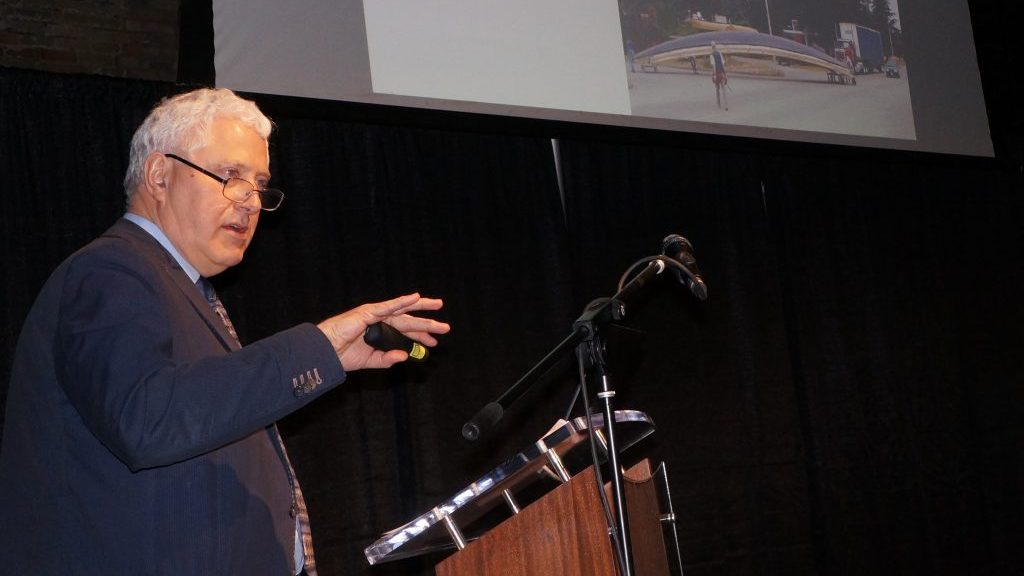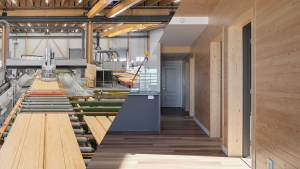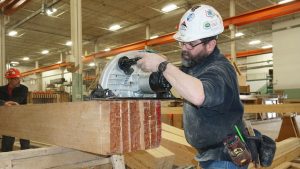A small “elegant knuckle” made of timber and stainless steel – one of the details of a building designed by renowned Italian architect Renzo Piano — was the genesis for a B.C. structural engineer to embark on an exploration into the use of timber in modern construction.
That was 25 years ago.
Today, Gerald Epp is president and chief engineer of StructureCraft Builders, an Abbottsford, B.C.-based engineering and timber-build construction company with a long list of high-profile timber frame buildings to its credit.
“A big part of my career has been experimenting,” Epp told designers and builders recently in Toronto at a seminar on the rise of “an old” product, timber.
“It is possible to use timber in ways that we have not imagined before. It is possible to make uses of new engineered wood materials in ways that are not easy for other materials,” he said, noting if steel was the building material of choice in the 19th century and concrete in the 20th century, than timber should be the choice in the 21st century.
He told the audience of designers and builders to keep an open mind when taking on work in the new field.
“If you are an engineer take the engineering principles you know but don’t just go to the (engineering) textbook” for solutions, he said.
“Think about the constraints of a project and allow those constraints to form a solution.”
Epp said in his early days margins were tight and, at times, projects were scarce. He needed a trump card and found it building a reputation of coming up with a fixed price early in a project’s design.
“A lot of those (our) projects would have never gone ahead if they didn’t have some reasonable fixity on the price…sometimes as early as schematics,” he explained.
He said in the late 1990s he took on the hat of builder for a high profile engineered wood project at the Vancouver Aquarium which specified a marriage of parallam and stainless steel.
“There was no one else who could build it so he (the architect) hired his structural engineer (me) to build it. It was a project that we learned a lot about parallam and stainless steel. And we barely broke even.”
But the job led to other contracts where Epp wore both engineer and builder hats.
In Minneapolis, Epp was awarded a six-storey building comprised of nail-laminated timber (NLT), a construction method first used in the 19th century.
“The brilliant thing that they (builders) knew 125 years ago after the Chicago Fire was that if you put boards together than they don’t go up in flames like a stick built building would,” he said.
While NLT remains an option for timber construction, Epp has turned away from it because it is labour intensive. Instead, just over a year ago his company started manufacturing dowel-laminated timber (DLT) at its new 50,000-square-foot plant in Abbotsford. It uses modern CNC equipment to meet precise standards while effectively reducing labour.
“We went to one of the key manufacturers of the (CNC) machines and said we want to do it on a large scale so we now have the largest, fastest DLT machine in the world.”
Epp said he sees timber frame construction, which relies heavily on off-site manufacturing, as part of a shift in the building industry to prefabrication and modularization.
“It’s the way of the future, especially with the 3-D tools we have now,” he said.
Held at the Young Centre for the Performing Arts in Toronto’s Distillery District, Epp’s seminar was hosted by Ontario Wood WORKS!






Recent Comments
comments for this post are closed